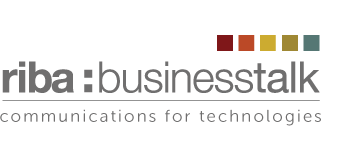
Increasing awareness, building trust and giving images the competitive edge – these are the goals of successful media relations. The same now as ever. The required measures and the accompanied circumstances that public relations professionals must take into consideration have, however, changed considerably in the past decade.
In the media landscape up until now, there has been a sharp defining line differentiating the editorial department from advertising. Companies or PR agencies representing them had to decide how they wanted to appear in the next issue: Should they get in contact with their editors and convince them of the subject and content of their text or use marketing funds to book an advertisement? The one had practically nothing to do with the other.
Bringing editorial and advertising businesses closer together
Over the past decade, however, it has become increasingly apparent that there is a trend towards linking the two fields more closely together. Editorial reporting and advertising businesses are growing together – not necessarily because they want to, but rather because they have to. For publishers, the sinking numbers of sold print editions are devastating. The worse the sales, they more dependent they are on the advertisers as a source of revenue.
For companies or agencies, putting it plainly, this means that an increasing number of editors, due to shrinking budgets, tend to prefer good advertising customers for the publication of technical articles, interviews or press releases. This of course does not apply to all newspapers and magazines; nevertheless, the trend cannot be simply disregarded. At the same time, the boundaries between public and media relations on the one hand and marketing on the other hand are blurring in PR agencies, too. Therefore, it does happen that the same PR consultant creating editorial posts for clients is also designing texts for the next advertising campaign at the same time. In addition, the same consultant is handling media planning – i.e. the distribution of the marketing budget to various print and online placements.
PR consultants become team partners
In no way does this mean that large marketing funds give a carte blanche for printing any company information. For continuous and credible presence in the press, companies cannot avoid hiring qualified public relations agents.
Due to developments in the media landscape, there’s another aspect that goes hand in hand: The supply of high-quality and journalistic content prepared by PR professionals is continually gaining relevance. One reason for this is the thinning of editors, especially since the consolidation wave in 2008 – fewer members of the writing guild are now responsible for delivering more text. The number of permanently employed writing professionals has decreased and it is often so that one editorial office is responsible for a number of publications within the publishing house. Due to the fast pace of issue production and the growing number of special editions, texts have to be produced as if on an assembly line. True to the motto: After the issue is before the issue.
The role of PR consultants who deliver qualified texts and have an understanding of the situations their contacts in the editorial office deal with are becoming, therefore, even more significant. If their contributions are written with well-founded expertise and without a striking advertising message; if they give readers a distinct added value and if they already have the appropriate structure for headlines, captions and subheads, then corporation-commissioned technical contributions and the likes can provide great support for editors. PR agencies are in the position to deliver articles on a journalistic level due to their technical and industrial expertise. These agencies are increasingly teaming up with editors and have become indispensable middlemen for companies.
Professional PR work includes the provision of high-quality image material. Product photos and graphics should be downloadable and printable. Yet too few companies and organizations provide this service on their website or in contact with the press. Here PR agencies are called upon to ensure that the wishes of the editors are fulfilled.
We from Riba: Business Talk have therefore designed the RBTPressRoom to ensure online access with the possibility to download press releases and images – read more about the PressRoom under the „News“ section in this issue. The internet becoming the number one communication platform in the last years has left its traces on PR agencies’ media relations. Seeing that even some PR agencies used to send press releases to the editors by post, it is hard not to notice how e-mail has become the common method today. Communication has to be fast. Turnover figures for new data and information are growing rapidly every day. This „time crunch“ to stay current has caused this shift from print to online media throughout the entire media landscape.
From Print to Online
In this context, entirely new means of communication for media work have emerged in recent years. In today’s world, companies can no longer avoid generating active and creative communication material for blogs and social media, where not only the circulation of photos and text is expanding, but also sound bites and videos – its potential is almost inexhaustible.
On a whole, the field of strongly effective measures for communication work is continually expanding. That is why cross-medial campaigns with self-created micro-sites, integrated sweepstakes and an accompanying PR story provide effective opportunities to shine a spotlight on company activities. Moreover, it renders more of an impact during the campaign period.

